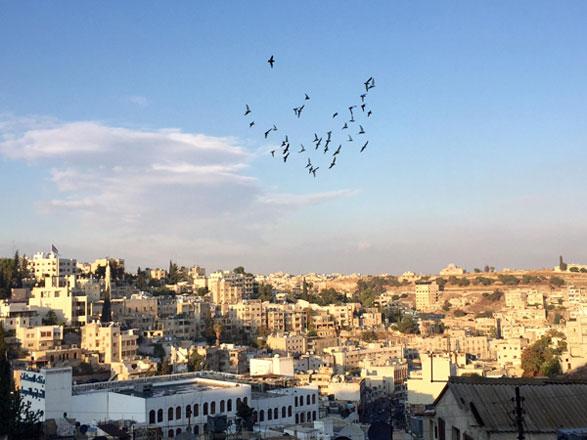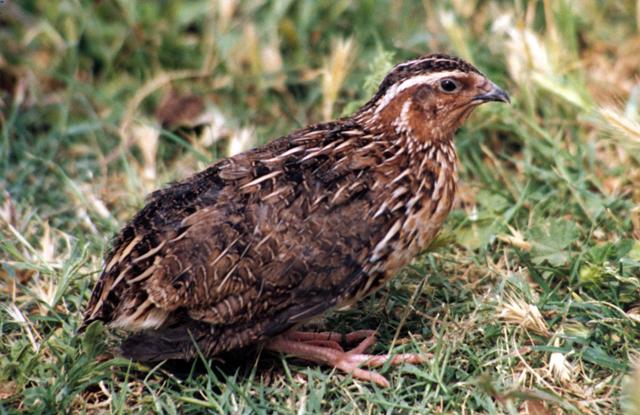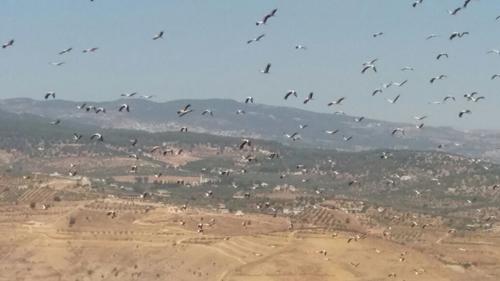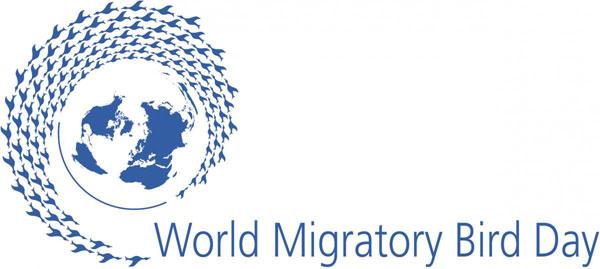You are here
Authorities on lookout for illegal hunting as birds' migration season starts
By Hana Namrouqa - Mar 01,2016 - Last updated at Mar 01,2016

A total of 37 types of migratory soaring birds, which maintain flight by using rising air currents, travel on the Rift Valley-Red Sea Flyway annually (Photo by Muath Freij)
AMMAN — With the start of birds' migration season, the Royal Society for the Conservation of Nature (RSCN) said Tuesday it will intensify inspection on areas where migratory birds rest to prevent their hunting.
RSCN Director of Conservation and Hunting Regulation Section Abdul Razzaq Hmoud said hunting of the majority of migratory birds that pass through the Kingdom is banned, noting that hunting of limited types of birds, such as quails, is allowed.
Hmoud noted that the spring migration season for quails, soaring birds and passerines has started, highlighting that thousands of migratory birds are expected to be seen flying in the country’s skies this month.
"The spring migration season starts in March and continues until mid May, while migration of birds peaks between the mid and end of March. However, there are several factors that control the start and end of the migration season, such as temperatures," he told The Jordan Times.
Migratory birds in the southern hemisphere start returning to Europe and the northern hemisphere in the spring. On their way, they stop over in places like Jordan to rest and drink water.
The period that migratory birds spend in Jordan depends on the availability of green cover and wetlands, according to Hmoud, who noted that during this time last year, the northern region had more wet landscapes compared to this time of the year.
Birds are attracted to the reflection of water while flying, according to conservationists, who said that they make several stops at wet areas in Jordan for resting and preparing nests.
But the lack of wetlands reduces the number of migratory birds that stop in the Kingdom.
The Rift Valley-Red Sea route is the world’s second most-used flyway, with more than 1.5 million birds crossing it during migration seasons in spring and autumn.
A total of 37 types of migratory soaring birds, which maintain flight by using rising air currents, travel on the Rift Valley-Red Sea Flyway annually, according to the RSCN.
At least five of these are globally endangered — white and black storks, buzzards, eagles and vultures.
The area west of the Hijaz Railway track and the Eastern Badia is the designated bird hunting area in the Kingdom, while the desert area is off-limits to hunters all year-round due to the scarcity of avian species inhabiting the region.
Related Articles
The Royal Society for the Conservation of Nature (RSCN) has announced the opening of hunting season for quails, which are hugely sought after by hunters.
AMMAN — Sightings of flocks of white storks across the country’s skies usher in the start of birds’ autumn migration season, a conservationi
AMMAN — The Royal Society for the Conservation of Nature (RSCN) will fly 500 kites at an event in Aqaba on Wednesday to mark World Migratory



















